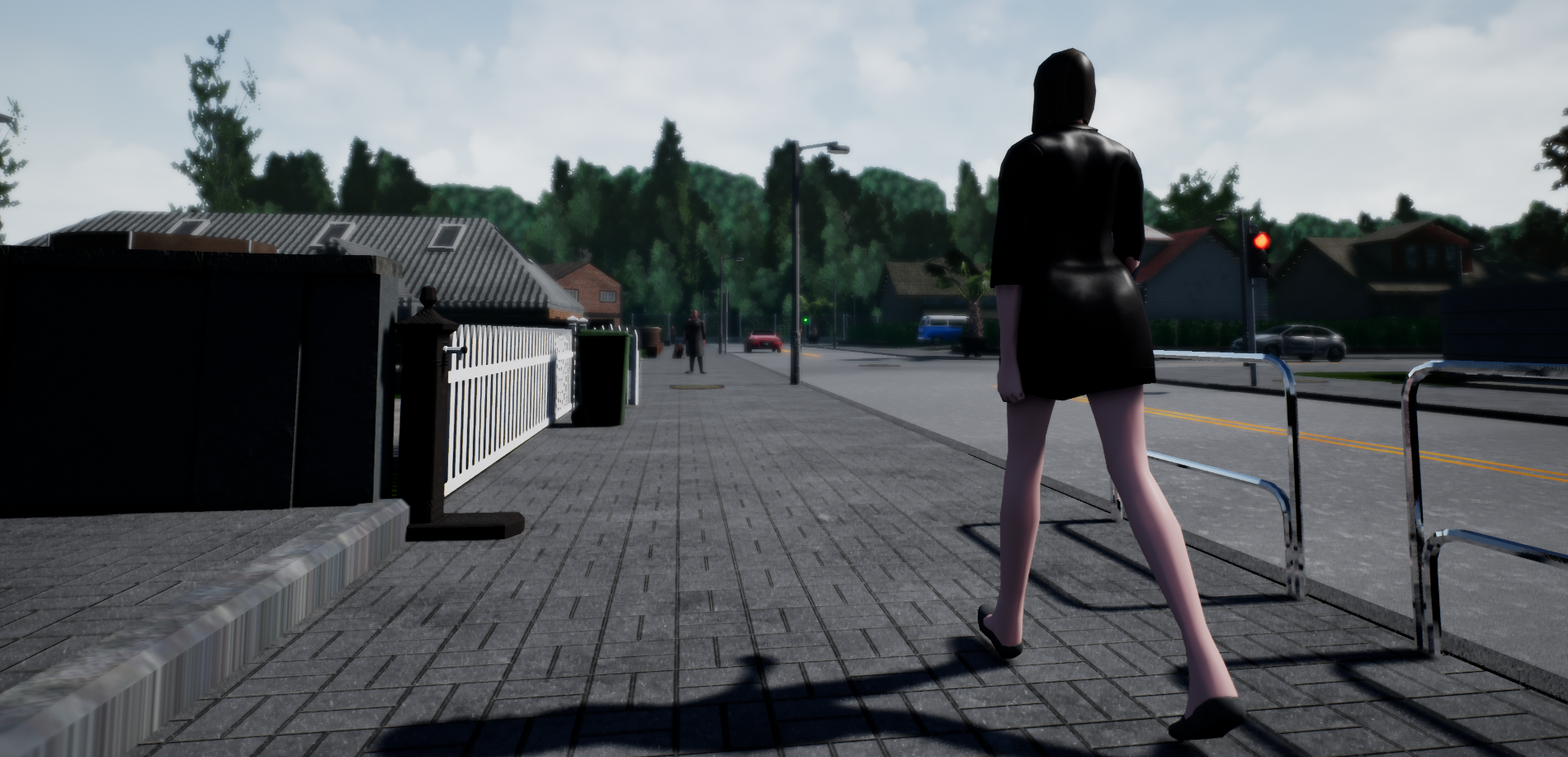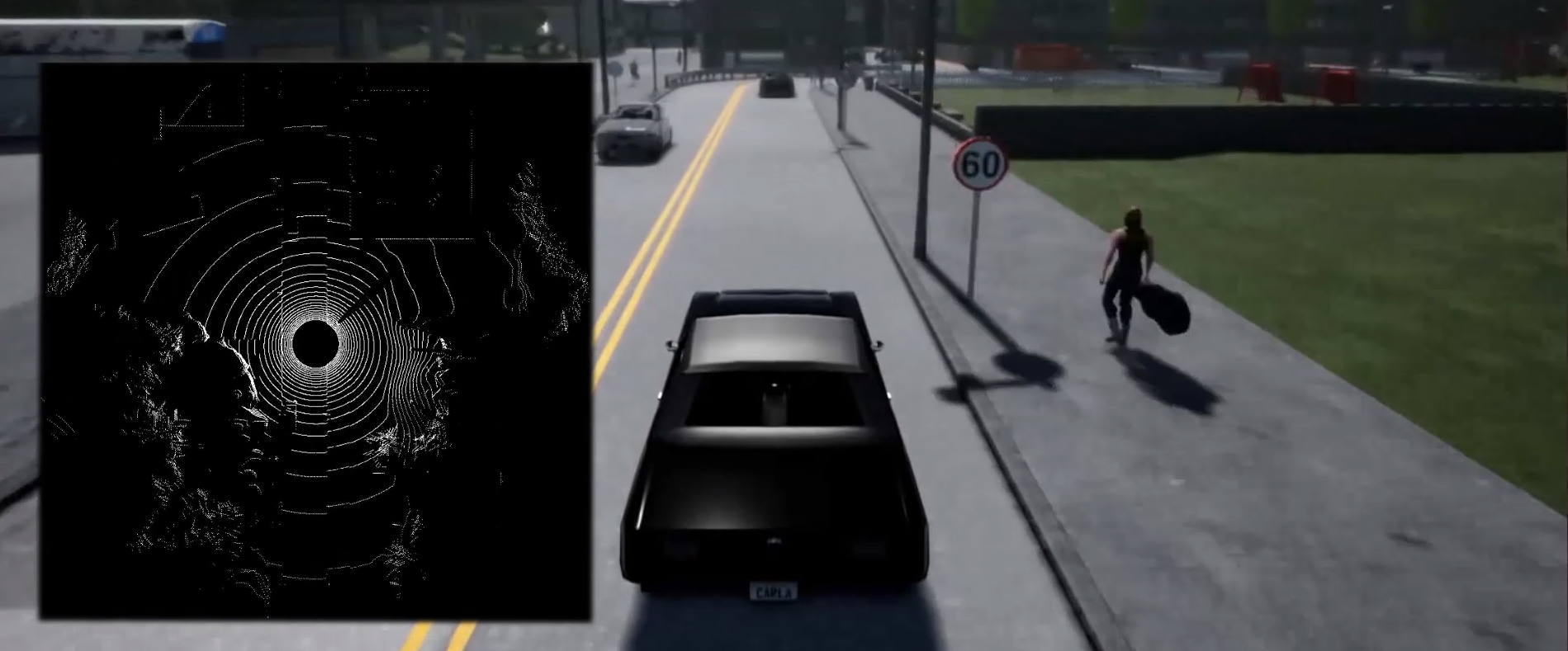We are proud to announce CARLA 0.8.0 Release and together with it, the first entry in our newly created CARLA blog!
In this release we have focused on increasing the speed, but there have been many other improvements too, including a great community contribution, a Lidar implementation!
We have also upgraded to Unreal Engine 4.18, if you are building from source you need to upgrade your Unreal Engine version. We have made some changes too in the client-server communication, so previous versions of the client won’t work with this release. As usual, the updated Python API is shipped in the same package as the release.
The CARLA Documentation has been also updated to a more tutorial-like format hoping to help new users getting started with CARLA.
Faster CARLA!
We have been working very hard to make CARLA faster. We mostly focused on improving the performance of capturing images, so the greatest gains are seeing when running CARLA with cameras and no agents (without other vehicles and pedestrians), being up to 45% faster.
We have improved several aspects of the scene to increase the render speed: optimized shaders, reduced textures, enhanced level of detail of trees, and reduced the background to a matte painting. Parallel to this, we reworked how the images are captured to reduce latency (more info on this below).
Quality levels
In this release we also introduce Quality Level settings. Configurable for each episode, they control the visual quality of the simulation. We have currently implemented the Low and Epic modes, but we plan to add intermediate levels in the future. The Low mode aggressively reduces the quality but runs considerably faster. This is especially useful where visual quality is not as important as running a huge number of episodes in a short time, as typically happens when testing reinforcement learning methods.
| Sensors | 0.7.1 | 0.8.0 Epic mode | 0.8.0 Low mode |
|---|---|---|---|
| No cameras | 22 FPS | 26 FPS | 60 FPS |
| One camera | 9 FPS | 13 FPS | 45 FPS |
| Three cameras | 4 FPS | 6 FPS | 15 FPS |
Table: Comparison between CARLA versions, measured in a typical scenario with 20 vehicles and 30 pedestrians on Town01, running on a machine with Ubuntu 16.04 and a GTX1080 GPU.
Improving CARLA performance is our top priority right now. We are not yet satisfied with the current speed, and we will keep working to make CARLA faster in the coming releases.
Fully free and distributable assets

We have created our own pedestrian 3D models, completely free to use and distribute. We have also removed all the dependencies with Epic’s Automotive Materials. This way it won’t be necessary to download this package and link it when building CARLA from source; of course, it is still possible to add it to the project, but this is now an optional step. Our release version does not make use of any proprietary assets now, all of CARLA is available on our GitHub build.
Measurements changed their units
This is an important change that may affect many client code; if you are developing your own CARLA client you should take this into account when upgrading to the 0.8.0 release.
Now CARLA uses SI units everywhere, so we finally say goodbye to the strange units we were carrying around (yes, we were using units like (km/h)/s for the acceleration).
| Location | \(m\) |
| Speed | \(m / s\) |
| Acceleration | \(m / s^2\) |
| Collision | \(kg \cdot m / s\) |
| Angle | \(Degrees\) |
| Time-stamps | \(ms\) |
Now all the units are coherent and derived from the SI unit system. All the measurements received by the client use meters, seconds, and kilograms. We only kept time-stamps in milliseconds for practical reasons.
Community contribution: Ray-cast Lidar

In this release we are including the great contribution of Anton Pechenko (Yandex), a ray-cast implementation of a rotating Lidar. Similar to Velodyne models HDL-32E or VLP-16, this Lidar implementation is fully configurable: number of channels, points per second, frequency, range, etc. The Lidar can be attached to the vehicle in the same manner cameras are attached. For more detail see the Lidar’s documentation.
On the client-side, for each Lidar a point cloud is received. We have added basic methods to export this point cloud in PLY format to easily visualize it in external software like MeshLab.
Depth-based point cloud
We have added some methods to our Python API to extract a 3D point cloud from a depth image. We have also put code to transform these 3D points to world coordinates. The point cloud format is shared with the Lidar output thus the transformations are compatible with both, and in the same way, it can be saved in PLY format. A sample of how to use it can be found in point_cloud_example.py.
Asynchronous captures
As mentioned above, as part of our set of performance improvements, images are now captured in Unreal’s render thread. By doing so we reduce the latency and avoid blocking the main thread as much as possible. This significantly reduces the overhead of the cameras but introduces small changes in the way images arrive to the client.
In asynchronous mode, images may arrive up to two frames later than the measurements. In Unreal Engine, the render has its own dedicated thread that runs slightly behind the game thread, by reducing synchronization the whole simulation runs faster.
In synchronous mode, images are still captured in the render thread, but at the moment of sending the measurements, the main thread is blocked until all the images are ready. This introduces some overhead, so the performance gain in this mode is not as high.
More changes
There has been a bunch of other small changes and fixes, for the full list of release notes see the CHANGELOG at our GitHub.